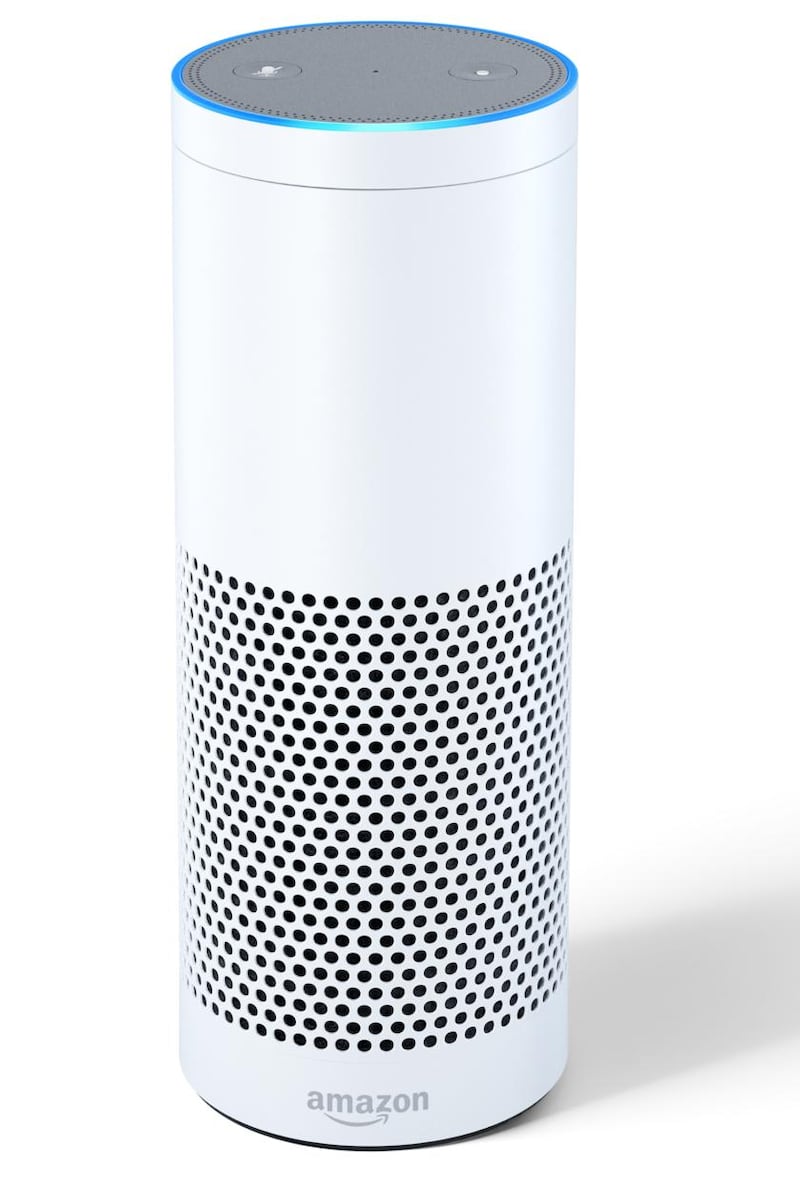Science fiction programmes sold us on the idea that computers would one day cater to our every whim, and robots would be there to carry out our commands. But it’s 2018 and I’m still taking out my own bins, so clearly we were oversold the concept.
But there are some moves towards that automated life, and Amazon is keen to get you there. Its digital assistant Alexa is currently being shoehorned into everything from speakers and phones to cars, as manufacturers tap into Amazon’s expertise to try to advance their products.
If you have the right equipment, it means you can ask Alexa to turn on and off lights, heating, read you an audio book, find you a podcast and add items to your shopping list. It all starts with an Echo device. One of Amazon’s newest smart speakers is the Echo Plus. The cylindrical speaker is the biggest of the Echo family, with a speaker grille and a Smart home hub built in. It has the usual things you would expect from the Echo devices: volume control, a mute button, an LED ring that changes colour to indicate everything from its connectivity status to whether or not Alexa is listening for your commands.
Enable skills
A single word (“Alexa”, “computer”, “Echo” – the choice is yours and can be set in the Alexa app) makes the device spring into life, ready to carry out your commands. Or at least try to; Alexa needs you to enable “skills” to work for certain things. For example, if I want to listen to podcasts, I can enable the TuneIn Radio skill. If I want Alexa to look up a recipe, I can enable Recipedia. And before now, if I wanted Alexa to switch on my wifi-enabled lights, I would have had to enable a skill for that. Not anymore.
The selling point of the Echo Plus is its smart home credentials. In Amazon’s world, you no longer have to invest in smart hubs and bridges to connect your devices to the internet and control them from your phone. The Echo Plus can do all that – within reason.
As a smart hub, the Echo Plus performance is smack bang in the middle of the road. That’s because, although it will control some devices, the controls can be quite limited. For example, if you have Philips Hue lights, the idea is that you can ditch the bridge and simply use the Amazon Echo Plus to control everything. That’s fine if you just want to control brightness, but the colour-changing lights are a different matter. Alexa will dim and brighten your lights all day if you ask, but she can’t mimic the colour scheme of your beach Instagram shot, or switch your light from a bright summer’s day to candlelight with a voice command. You can’t do it in the app either; for that, you’ll need the bridge.
Very new
That may change over time. The Echo Plus is very new to the smart home game and, going by Alexa’s history, the device will improve vastly over time. At the moment it does a good job – just not a standout one. If you have already invested in smart home hubs and don’t need the speaker, you’d be better off buying the cheaper Echo Dot and rely on the different skills Alexa has to offer.
Because that is the other selling point of the Plus: the built-in speaker. In the Echo Dot, the speaker is functional, made for basic Alexa interactions. The Plus has a bit more oomph to it, although it will still struggle with a bit of distortion at higher volumes. For books, music and radio shows at up to and slightly above normal volumes, however, the Echo Plus will perform well. It even has Dolby technology inside. The question is, is it worth paying the premium over the Dot to get it?

The good: If you are starting out with smart home devices and just want something simple, the Echo Plus is a help. It cuts down the need for extra bridges, and it will help you set everything up quickly and easily. The speaker's performance is decent, so you can listen to your podcasts, audio books and music, and you can still hook it up to external speakers too.
Routines are now available on Alexa devices, which means you can trigger a series of actions with a single command. For example, switching on lights and heating as you walk through the door with “Alexa, I’m home”.
The not so good: Amazon has opted for Zigbee compatibility, cutting out Z-Wave devices. And despite the smart home hub built in, you still need the bridge for some controls on certain smart home devices.
The verdict: If you are getting started on smart home products, the Echo Plus takes a lot of the pain out of it.











